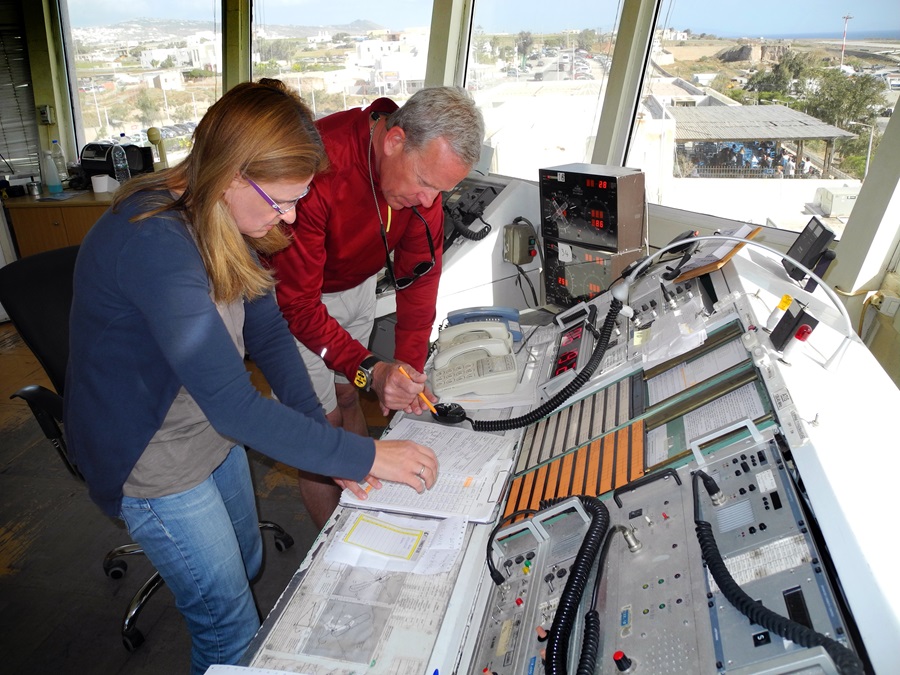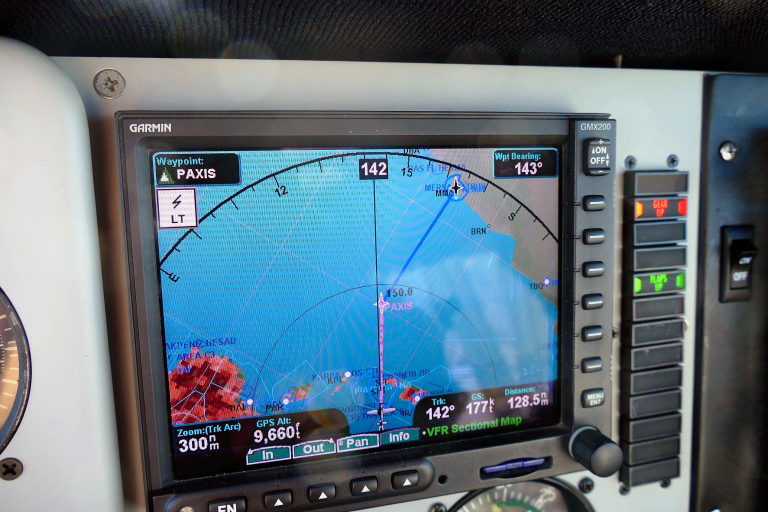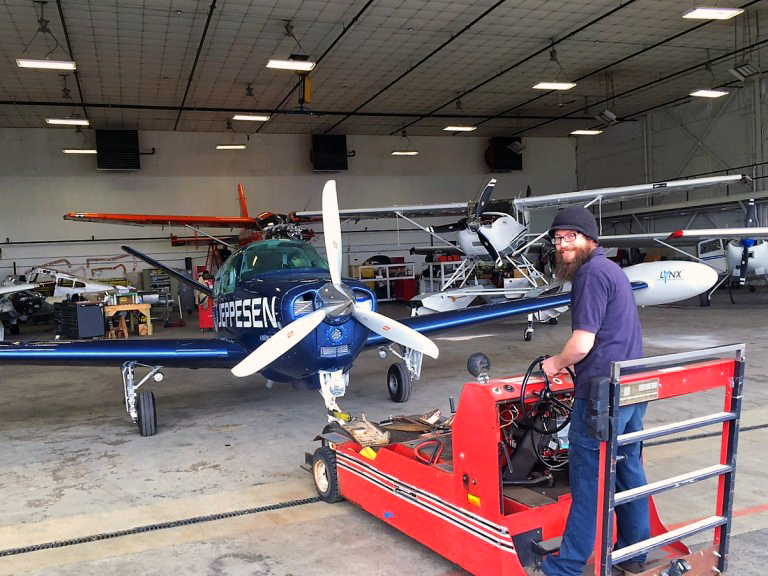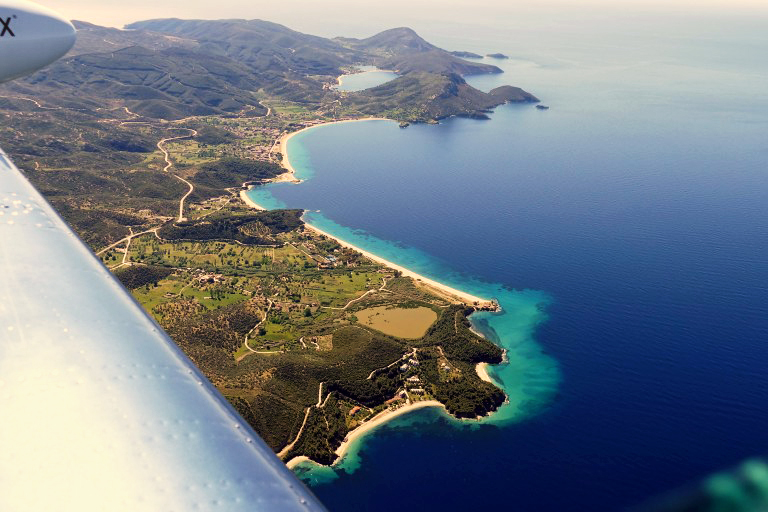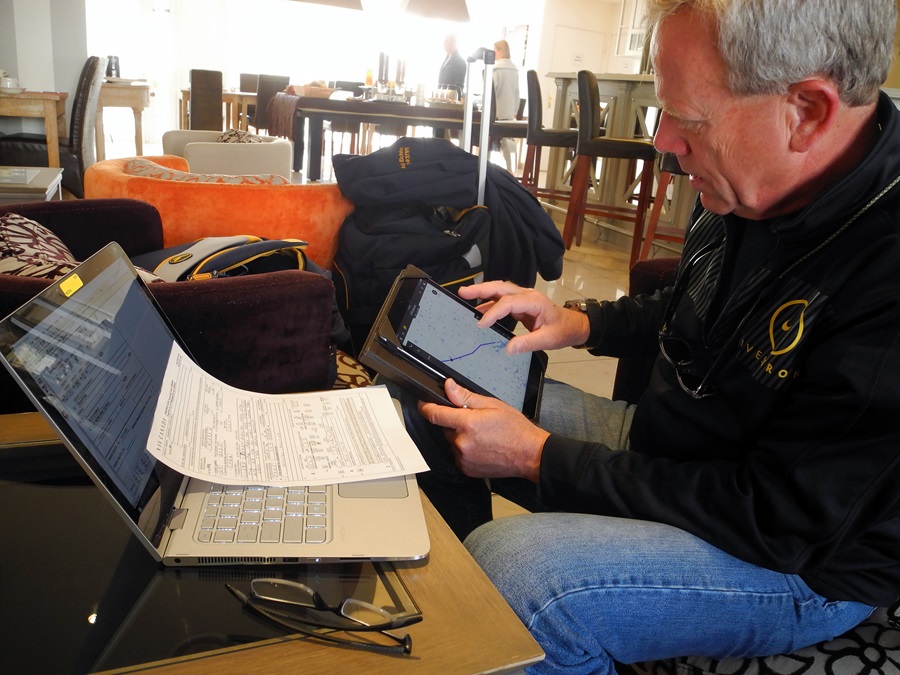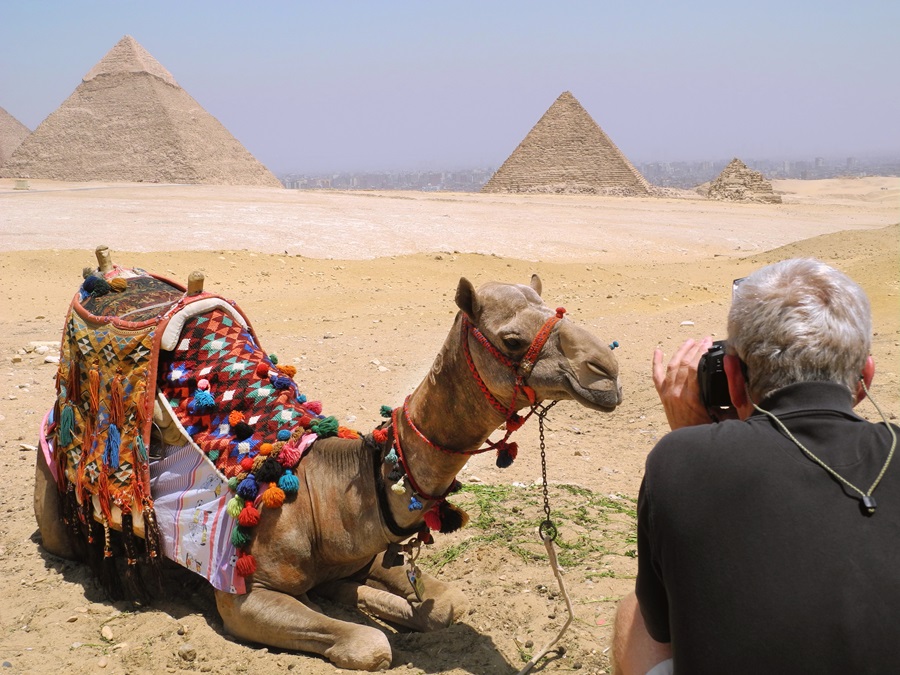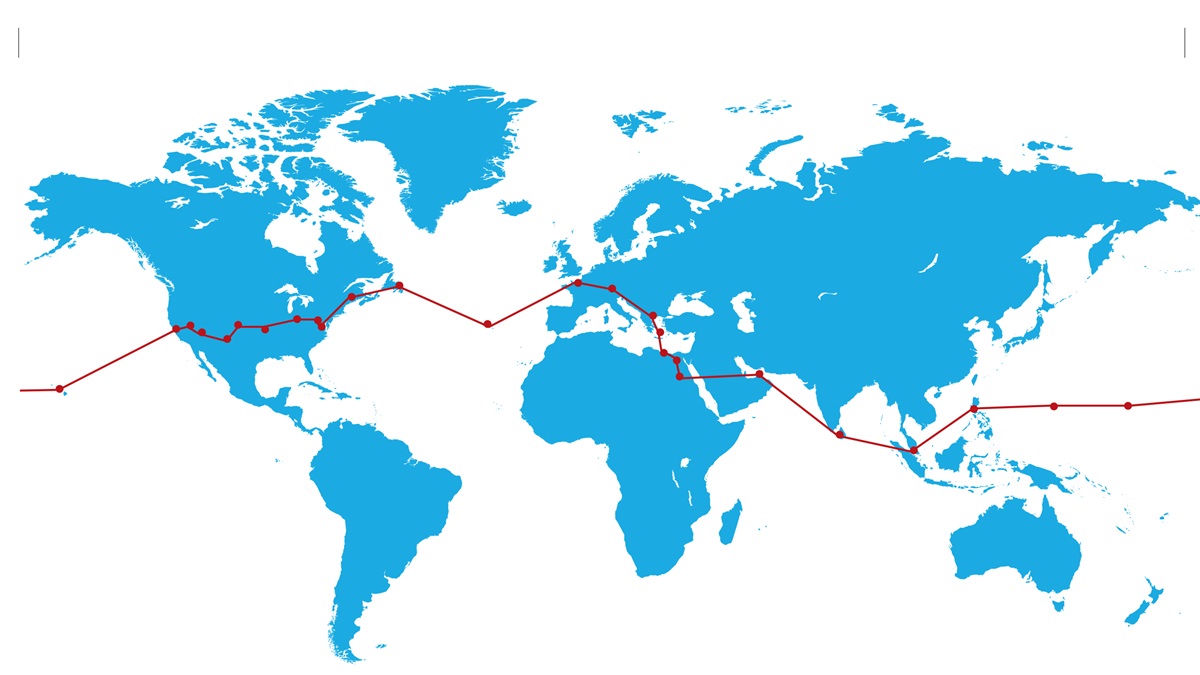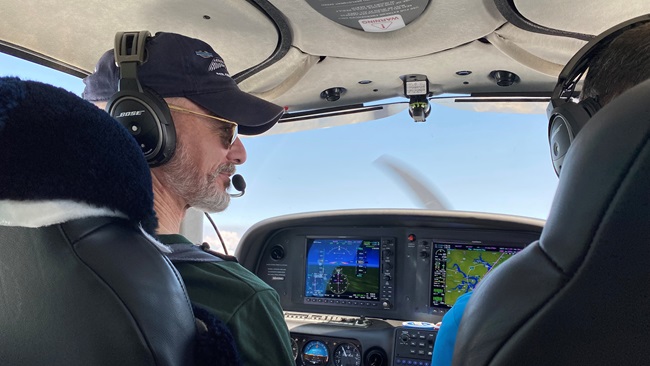Spirit of aviation around the world
Globe-circling pilot learns value of American-style GA
His experience taught him much about the importance of protecting general aviation as we know it in the United States—because such freedom exists nowhere else. And although pilots in places such as Egypt, Greece, and Malaysia must overcome major bureaucratic and cost obstacles on every flight, their passion for aviation is inspiring to those of us for whom flying may be as simple as rolling an airplane out of the hangar and taking off in any direction, our only limit the amount of fuel in the tanks.
“I’m happy to report that the fellowship of aviators is alive and well around the world,” Eichhorn said after his five-week adventure in the spring of 2016. The former U.S. Army lieutenant colonel and current JetBlue first officer spent five years disassembling and rebuilding his 1962 P35 model Bonanza in preparation for the journey. Eichhorn, who was named the FAA National Aviation Maintenance Technician of the Year in 2016, is an A&P mechanic with inspection authorization. He did most of the work on the airplane himself, but gives much of the credit for the nearly flawless performance of the airplane on its 163-hour trip, much of it across oceans, to the many friends he tapped to assist with the work. While he made many modifications to the airframe as he went along, including an enlarged baggage compartment door, the most obvious one specific to the around-the-world trip was the addition of enormous tip tanks to provide the 17-hour range he would need for the longest legs across the Pacific Ocean. In fact, with 100 gallons in each tip plus 80 in the wings, he would have an endurance of well more than 26 hours with the 260-horsepower Continental IO-470 running lean of peak.
To assure no oil-level problems during those long legs, he elected to do a top overhaul on the engine, replacing the oil-consuming channel chrome cylinders with new Superior jugs. A new Insight G4 engine monitor allows him to monitor the engine performance to the exact degree. For electrical backup he added a B&C standby alternator. To back up his mechanical gyros he installed an L-3 Avionics ESI 500 Genesis standby instrument. L-3 also provided a new Lynx NGT-9000+ transponder, giving him ADS-B compliance and terrain information. Given no satellite weather datalink outside the United States, he installed a WX 500 Stormscope lightning detector, which proved incredibly helpful over the Middle East, where thunderstorms were prevalent.
For cockpit safety, he added a Guardian Avionics carbon monoxide detector. A portable Spidertracks system allowed well-wishers to follow along via the Web as it provided real-time satellite tracking. An Artex 406 MHz ELT was in place to call in the cavalry should he end up somewhere other than an airport.
Eichhorn’s first experience of what he calls the fellowship of aviators (FoA) occurred during the first leg of the journey. He left his home base at Manassas, Virginia, and flew nonstop to Bangor, Maine. However, en route he noticed an unusual reading on his engine analyzer. One cylinder’s behavior seemed erratic when running lean of peak. A mechanic at Maine Aero in Bangor dropped everything to help him troubleshoot the problem. Ultimately the mechanic spotted a tiny fuel leak coming from the fuel injector line. Left undetected, it could have dumped raw fuel onto the exhaust at some point on Eichhorn’s leg across the Atlantic Ocean.
During the nine-hour Atlantic crossing to the Azores, his headset stopped working. There, the FoA came into play again when the only general aviation pilot he could find on the remote islands, an ultralight owner, loaned him a headset for his next leg to France. There, Eichhorn mailed the headset back when he found access to another.
The Army veteran found the France portion of the trip to be among the most moving of the journey. Ian Seager, publisher of England’s Flyer magazine flying a Cessna 182, teamed with photographer Ed Hicks to capture an image of the Bonanza over the American Cemetery and Omaha Beach at Normandy, site of the World War II D-Day landings.
In the name of FoA, the Brits loaned their expertise and airplane to the cause at no charge. “Seeing from the air the view of those C–47 pilots on that morning, I was humbled by what they did for us,” Eichhorn said on reflecting about the formation flight, walking on the beach, and visiting the pristine cemetery—resting place for some 10,000 Americans who never returned home from the war.
Meanwhile, local pilots in Deauville, France, recognized Eichhorn and his distinctive all-blue Bonanza—global social media at work.
More pilots recognized the airplane at the Aero show in Friedrichshafen, Germany, one of Europe’s largest general aviation exhibitions. The Bonanza was on display as part of the Jeppesen booth, one of Eichhorn’s many corporate sponsors.
After a few days in Germany, Eichhorn launched across the Alps and down the Adriatic Sea to Thessaloniki, Greece, a major port on the Agean Sea and home to the Aeroclub of Thessaloniki. Members of the flying club and AOPA Greece hosted Eichhorn for several days, the FoA at work again. Eichhorn returned the hospitality by helping one of the local pilots diagnose a turbocharger problem on his Piper Arrow.
While aviation throughout Europe has similarities to the United States, pilots there face user fees, high fuel costs, restrictive maintenance requirements, and overregulation to a level barely imaginable in the United States. But even that pales compared to what Eichhorn faced on most of the rest of his global journey.
An organization called General Aviation Support Egypt (GASE) hosted Eichhorn on his next leg, where he began to truly understand how scarcity drives demand—or at least enthusiasm. Eddie Gould, who co-founded GASE with Ahmed Hassan, introduced the American to an Egyptian cardiologist, who, after a bit of contemplation, determined that he may well be the only active general aviation aircraft owner in all of Egypt. A few others in the African country own airplanes, but they are not active. Gould and his small company provide low-cost handling services for pilots making long-distance flights. In most countries outside North America, “handling fees” are the norm. Varying greatly from country to country, they can be confusing and difficult to pay, but miss one and you could be behind bars. GASE taps into local pilots and handlers to help travelers through various countries, a service Eichhorn came to appreciate as he left Egypt for the Middle East and Southeast Asia.
And although the cultures across that vast stretch of the planet vary widely, the one common thread among pilots was an amazing enthusiasm for flying. “It seems the more difficult it is to fly, the more passionate the pilots become,” Eichhorn observed. The local EAA chapter in Kuala Lumpur, Malaysia, turned out in droves to meet the American, anxious to hear his story and learn more about flying. “To fly in the United States is a dream for them. With the military controlling the airspace in most countries, the idea of ‘freedom to fly’ is almost incomprehensible to them,” he said. In most countries outside the Americas, Europe, Australia, and New Zealand, VFR flying is not permitted or is only allowed within the pattern of the local airport. Instrument flight demands payment of complex en route fees and a host of landing, handling, and assorted other fees—charges that often then carry a tax or service charge on top.
In Manila, an entity called Airmach Aviation presented Eichhorn with a bill for $3,347.84, which included handling charges, a $150 landing permit facilitation fee (not to be confused with the $85 landing and takeoff charge), and things
as esoteric as a “quarantine fee” ($175)
and a “Parking & Lighting” fee ($120 for two nights). Eichhorn arrived after dark, but claims the ramp lights were never turned on.
Fuel was reasonably affordable at $1.90 a liter, about $7.20 a gallon; he paid upwards of $26 a gallon in the United Arab Emirates, where the raw material practically bubbles from the ground, right? The handling fee in Dubai was more than $1,000.
As if to add insult to injury, the Manila bill included more than $280 in taxes and “admin charges” on top of the fees.
Such charges were typical throughout the trip once beyond U.S. shores.
While frustrated by what seemed to be price-gouging fees and bureaucratic processes for obtaining routings and permits, Eichhorn mostly took the experience in stride. “I made this trip because Adrian wanted to. I had no agenda. No cause. This was a bucket-list item. I’m glad I did it,” he says reflectively.
While he had toyed with the idea for years, the planning really kicked into high gear in the fall of 2014 when his sister and mother died within a week of one another. “Life-changing events like that make you realize that ‘tomorrow’ may be too late. You have things you want to do? Go do them.”
Continuing the spirit of the fellowship of aviators, Eichhorn spent much of the summer and fall sharing tips and techniques learned on the journey with other pilots at the AOPA regional fly-ins and EAA AirVenture. He’ll continue that in 2017. “The biggest takeaway for me,” he said, “is that what we have here in the States is unique and worth protecting. There’s no place like this in the world, where we truly have the freedom to fly.” And while he says he has no desire to fly a similar route again, he pats the bulbous tip tanks on N1733G and says with a sparkle in his eyes, “But you know, there’s always the poles.”
Email [email protected]


